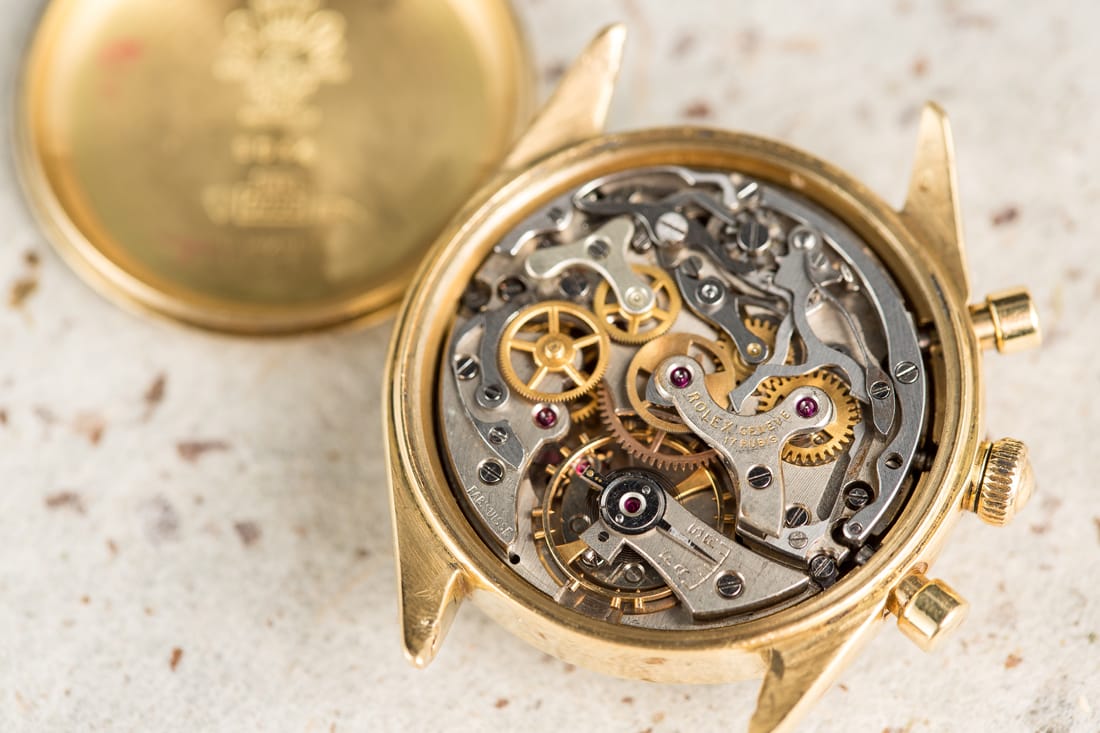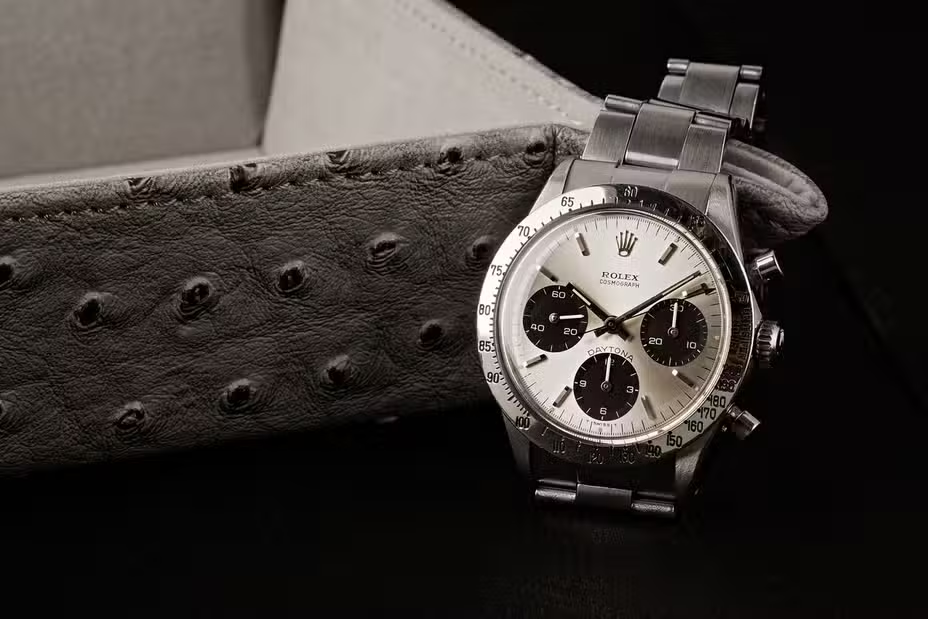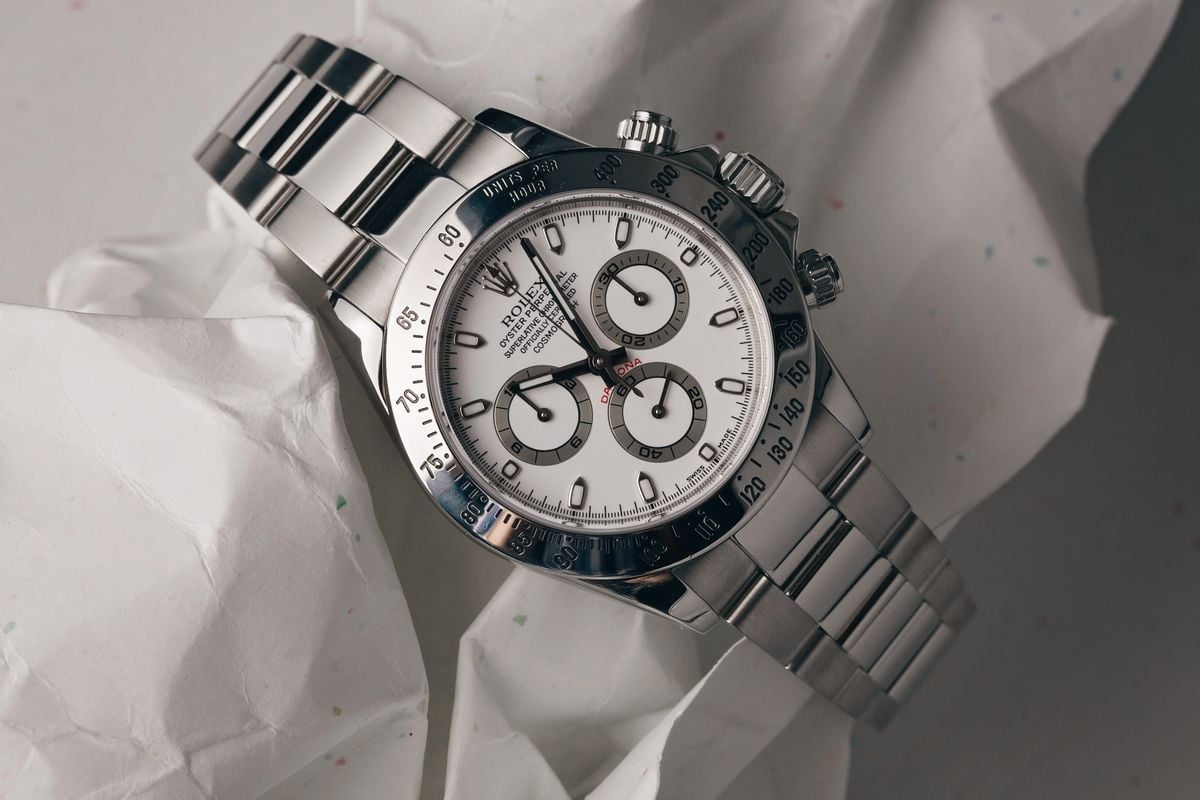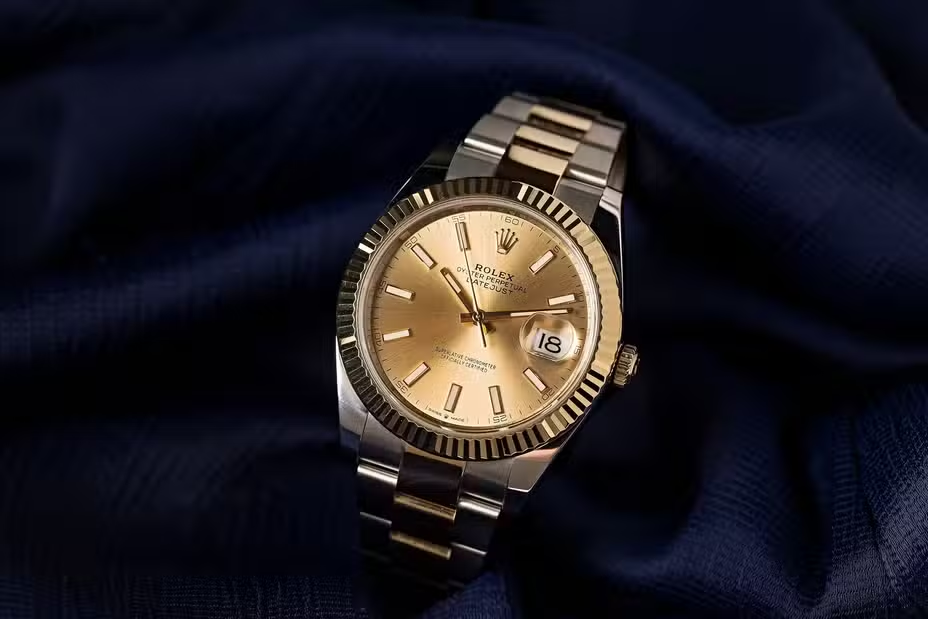How to Wind a Rolex Watch: Step-by-Step Guide & Expert Tips
Wondering how to wind a Rolex watch correctly? To wind a Rolex properly, gently unscrew the crown and rotate it clockwise approximately 30 - 40 times until you feel gentle resistance, then securely screw it back in. Proper winding is crucial because it ensures your Rolex maintains optimal accuracy, preserves its precision movement, and protects its longevity. In this guide, we'll provide detailed steps, expert tips, and answer common questions about winding your Rolex watch.
Understanding Rolex Watch Movements

Before diving into winding techniques, understanding the fundamental differences between Rolex movement types is crucial. This knowledge directly impacts how you should approach winding your specific timepiece.
There are two main types of Rolex movements:
- Automatic Rolex Watches feature self-winding movements powered by a rotor that spins with your wrist movement throughout the day. These watches include popular models like the Submariner, Datejust, and GMT-Master II. While they wind themselves during regular wear, they may require manual winding when unworn for extended periods.
- Manual Rolex Watches require deliberate winding to function properly. These timepieces, including many vintage Rolex models and select contemporary pieces, depend entirely on manual crown winding to power the mainspring.
Rolex watches might stop running for several reasons:
- Insufficient winding
- Extended periods without wear
- Potential mechanical issues requiring professional attention
Understanding your watch's power reserve (typically 48-72 hours for most modern Rolex models) helps you determine appropriate winding frequency.
Step-by-Step: How to Wind an Automatic Rolex Watch

Winding an automatic Rolex watch requires gentle precision and attention to the watch's natural resistance points. Follow these detailed steps to ensure proper technique:
The Complete Winding Process
- Unscrew the crown gently by turning it counterclockwise until it releases from the case threads. Apply minimal pressure to avoid cross-threading or damaging the crown mechanism.
- Wind clockwise 30-40 times until smooth resistance develops. Turn the crown away from your body using your thumb and forefinger. You'll feel the crown's resistance gradually increase as the mainspring tension builds.
- Securely screw the crown back into place by pressing it gently toward the case and turning clockwise until finger-tight. Never over-tighten, as this can damage the crown tube or threads.
Model-Specific Considerations
Different automatic Rolex models have subtle variations in their winding characteristics. The Rolex Submariner typically needs around 30 turns for optimal power reserve, while the Rolex Datejust may require 35-40 turns depending on the movement generation. The Rolex Oyster Perpetual, being one of Rolex's most fundamental automatic movements, usually achieves full wind with approximately 35 clockwise rotations.
Expert Tip: Always wind your automatic Rolex while it's off your wrist to maintain better control and avoid unnecessary stress on the crown and stem mechanism.
Step-by-Step: How to Manually Wind a Rolex Watch

Manual winding techniques differ slightly from automatic models, requiring more frequent attention and a deeper understanding of the watch's power reserve limitations.
Manual Winding Procedure
- Gently pull out or unscrew the crown, depending on your specific Rolex model. Vintage Rolex watches often feature pull-out crowns rather than screw-down systems.
- Wind the crown clockwise until you feel gentle resistance (typically 20-30 winds). Manual movements provide more direct feedback through the crown, making it easier to sense when the mainspring approaches full tension.
- Carefully push or screw the crown back to its original position, ensuring proper seal integrity for water resistance.
Vintage Rolex Considerations
How to wind a vintage Rolex watch requires extra care due to potentially aged components and different crown mechanisms. Vintage models like early Submariner references, Explorer watches from the 1950s-60s, and manual-wind Daytona models need gentle handling and may require more frequent winding cycles due to older mainspring materials.
Classic manual-wind Rolex models include the original Explorer (ref. 6610), early Submariner references without automatic movements, and various vintage Precision models that collectors highly prize today.
How Often and How Many Times Should You Wind Your Rolex?

Understanding optimal winding frequency prevents both under-winding and potential overwinding concerns while maximizing your Rolex's performance and longevity.
Frequency Guidelines
The winding frequency for your Rolex depends on the type of movement and your wearing habits:
- Automatic Rolex watches worn regularly typically don't need manual winding since natural wrist movement provides sufficient power. However, if not worn daily, winding once per week maintains optimal accuracy and prevents the movement from completely stopping.
- Manual Rolex watches require daily winding for consistent timekeeping. Many collectors establish morning winding routines to ensure their vintage or manual timepieces maintain peak performance throughout the day.
Optimal Wind Count
How many times to wind a Rolex depends on the specific movement and current power reserve state. The table below provides general guidelines for different Rolex categories:
| Watch Type | Recommended Winds | Frequency | Power Reserve |
| Modern Automatic | 30-40 rotations | Weekly (if unworn) | 48-72 hours |
| Vintage Automatic | 25-35 rotations | 2-3 times per week | 36-48 hours |
| Manual Wind | 20-30 rotations | Daily | 36-42 hours |
| Recently Serviced | 35-40 rotations | As needed | Varies by model |
The key indicator is crown resistance. Stop winding when you feel smooth, consistent resistance rather than counting exact rotations. This approach prevents potential overwinding while ensuring adequate power reserve.
Can You Over-Wind a Rolex? Myths & Facts

The question of overwinding Rolex watches generates considerable confusion among owners, but understanding the engineering behind these timepieces provides clarity and peace of mind. Here are the key facts:
- Modern Rolex watches cannot be over-wound due to sophisticated built-in safety mechanisms called "slipping mainsprings" or "bridle systems." When the mainspring reaches full tension, these systems automatically disengage the winding mechanism, allowing the crown to rotate freely without adding additional tension.
- Vintage Rolex models from earlier decades may lack these advanced safety features, requiring more careful attention during winding. However, even older movements typically provide clear resistance feedback when approaching full wind, making it difficult to cause damage through normal winding procedures.
- The "overwinding myth" often stems from other mechanical issues unrelated to actual mainspring tension, such as worn crown components, damaged stem mechanisms, or movement contamination requiring professional service.
Troubleshooting: Why Isn't My Rolex Running After Winding?

When proper winding techniques fail to restore your Rolex's function, several common issues might require attention or professional diagnosis.
Common Problems and Solutions
Several issues can prevent your Rolex from running properly, even after following correct winding procedures:
- Insufficient winding represents the most frequent cause of stopped Rolex watches. Many owners underestimate the number of crown rotations needed for adequate power reserve, particularly with vintage or recently serviced movements.
- Crown mechanism issues can prevent effective power transfer from winding motions to the mainspring. Worn crown tubes, damaged stems, or compromised crown threading may require professional repair or replacement.
- Movement contamination from age, moisture, or inadequate service intervals can cause mechanical binding that prevents normal operation despite proper winding technique.
When to Seek Professional Service
Contact authorized Rolex service centers or certified watchmakers when:
- Basic winding fails to restore function
- You notice unusual crown resistance or grinding sensations
- Your Rolex loses significant accuracy despite regular winding
These symptoms often indicate internal mechanical issues requiring professional expertise and genuine Rolex components.
How to Wind Your Rolex: Expert Demonstration
For visual learners seeking hands-on demonstration of proper Rolex winding techniques, watch this expert video guide that showcases the precise movements and pressure required for optimal results.
This comprehensive visual demonstration covers both automatic and manual winding procedures, highlighting common mistakes to avoid and professional tips for maintaining your Rolex's performance through proper winding practices.
The video features close-up footage of crown manipulation techniques, resistance point identification, and model-specific considerations that complement the written instructions provided in this guide.
Proper Winding: Essential Care for Your Rolex Watch

Understanding how to wind a Rolex properly protects your investment while ensuring decades of reliable performance. Whether you own an automatic or manual model, following expert techniques maintains legendary accuracy and preserves value for future generations.
Proper winding technique represents just one aspect of responsible Rolex ownership, but it's fundamental to experiencing the precision and reliability that have made Rolex the world's most respected watch brand.
FAQs on Winding a Rolex Watch
No, proper winding technique cannot damage modern Rolex watches due to built-in safety mechanisms that prevent overwinding. Always follow recommended procedures and stop winding when you feel smooth resistance.
Not all Rolex watches require regular manual winding. Automatic models self-wind through wrist movement during daily wear, while manual models need daily winding for consistent operation.
A fully wound Rolex exhibits smooth crown resistance during winding attempts and maintains accurate timekeeping for its specified power reserve period (typically 48-72 hours for modern movements).
Typically, winding your Rolex watch 30–40 times provides enough power for accurate performance. Stop when you feel consistent resistance rather than counting exact rotations.
Automatic Rolex watches worn regularly typically don't need manual winding; however, if not worn daily, winding once per week is ideal for maintaining optimal performance and accuracy.
Winding a Rolex Datejust involves gently unscrewing the crown, turning it clockwise 30–40 times until you feel slight resistance, then securely screwing the crown back to maintain water resistance.
To wind your Rolex Submariner, unscrew the crown gently, rotate it clockwise around 30 times, then screw the crown firmly back into place without overtightening.
Winding an Oyster Perpetual requires unscrewing the crown, winding clockwise approximately 35 turns until resistance is felt, then carefully screwing it back into position.
With over two decades of experience in the luxury watch industry, the Bob's Watches Editorial Team stands at the forefront of watch expertise and insight. Our team, composed of seasoned watch enthusiasts, skilled horologists, and knowledgeable industry insiders, is dedicated to bringing you the latest and most accurate information in the world of luxury timepieces. We pride ourselves on our meticulous attention to detail and our unwavering commitment to authenticity. Our editorial content is a reflection of our passion for luxury watches and our dedication to providing our readers with comprehensive, unbiased, and up-to-date information. Our expertise spans a wide range of topics, including in-depth reviews of the latest models, historical retrospectives of iconic timepieces, and insightful analyses of market trends. We are also renowned for our detailed guides on watch maintenance and investment advice, making us a trusted resource for both seasoned collectors and new enthusiasts alike. As thought leaders in the watch industry, we understand the importance of staying ahead of the curve. That's why we continually update our knowledge and skills, ensuring that our readers receive the most current and relevant information. Whether you're seeking advice on your next luxury watch purchase or looking to deepen your understanding of watch craftsmanship, the Bob's Watches Editorial Team is here to guide you.
Disclaimer: The information presented in this article is based solely on internal transaction data from Bob's Watches and reflects our own historical sales activity over the past 15 years. It is not intended to represent or imply broader market trends or pricing across the entire watch industry. While we strive for accuracy in our reporting, all data is provided "as is" and may be subject to revision. This study is for informational purposes only and does not constitute investment advice, valuation guidance, or a guarantee of future watch values.